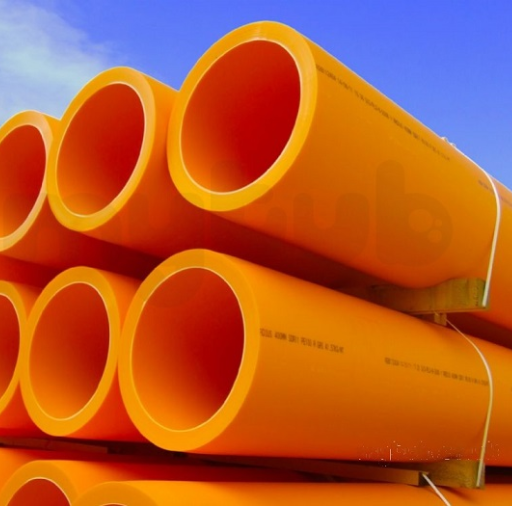Over the past decade, high-density polyethylene (HDPE) gas pipes have been accepted in various sectors, especially in the transport of natural gas. This guide will cover everything about HDPE gas pipes- their extraordinary strength, rapid installation, and various uses. These pipes have a superior strength-to-weight ratio and outdo existing pipe systems in nearly all aspects since they are not susceptible to corrosion and are much less rigid. Regardless of whether you are a field engineer, a contractor, or even just someone who wants to know how modern facilities are built, this article outlines motives as to why one should consider piping made out of HDPE when replacing existing gas transportation pipes.
What is an HDPE Gas Pipe?
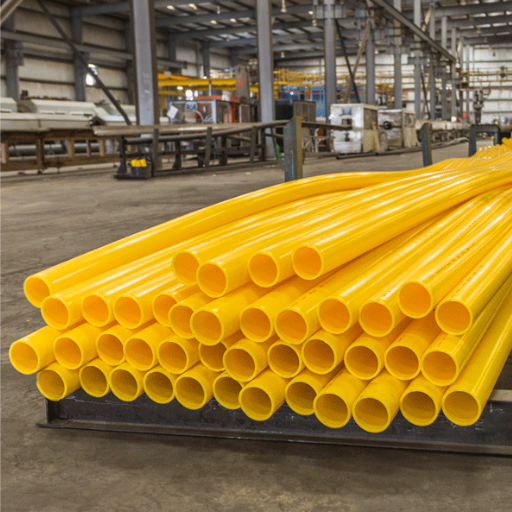
An HDPE gas pipe, or High-Density Polyethylene gas pipe, is a kind of plastic pipe mostly used for the distribution of natural gas because of its exceptional characteristics. It is made from thermoplastic, which is a polymer that has a high strength-to-density ratio allowing making it tough and flexible. It Is widely known that these types of piping do not fail due to a variety of environmental factors such as corrosion and chemical degradation, which makes it suitable for extreme conditions. It is also very flexible, which raises the ease of installation, lowers the number of joints, and decreases the chances of leakages. Therefore, HDPE gas pipes offer a low-cost, dependable, and sustainable solution for gas distribution networks.
Understanding HDPE and Its Benefits
I am often asked about HDPE gas pipes and their merits. In my view, this is something that is easy to understand. To start with, HDPE, or high density polyethylene, is a form of plastic that is both durable and flexible.
- Durability: The durability of HDPE pipes is one of the main reasons why I recommend them. They are significant strength-to-density ratios; hence, they can resist great amounts of pressure and still not break down.
- Corrosion Resistance: HDPE, unlike metal pipes, is non-corrosive in nature. This is of great advantage in situations where pipes are subjected to different chemicals or different types of weather over a period of time.
- Flexibility: Because of the flexibility of HDPE pipes, they can bend which means without breaking. This feature is advantageous particularly during the installation of the buildings as it minimizes the number of joints that would have been a possible area of leakage.
- Cost-Effectiveness: Because of its life span and reduced maintenance requirements, HDPE is seen to be more cost-effective in the long run than most other alternative materials.
- Eco-Friendly: Finally, HDPE pipes have the advantage that they can be reused in gas transportation structures, thus making them energy-saving materials
In conclusion, all that remains is the fact that HDPE gas pipes are a practical and robust solution for natural gas transportation while also being eco-friendly.
How HDPE Compares to Other Pipe Materials
I can explain the position held by HDPE vis-a-vis other materials for pipes. Let’s approach this subject using the essential factors of this project as follows:
- Strength: If we refer to the strength of the material, then one can mention the high strength-to-density ratio of HDPE. This suggests that its weight is relatively low due to its capacity to withstand high pressure, similar to steel pipes, with its absence of heavy metal weight.
- Corrosion Resistance: What is excellent about HDPE as compared with metal pipes is its anti-corrosive property. Metal pipes rust and corrode as they are in contact with water and other chemicals present in the soil. On the other hand, HDPE is not affected by such processes therefore enhancing the life of the pipe without any further coatings or treatments.
- Installation Ease: The flexibility which is presented by HDPE is advantageous in the time of installation. HDPE retains the ability to bend in accordance with the contours of the landscape therefore eliminating the need for complex joint systems which could be rigidly trimmed PVC or metallic pipes and could be hard to install as well as maintain.
- Cost-Effectiveness: HDPE, more often than not, is cheaper compared to PVC or metal in the long run. The factors that can result in such a phenomenon would be the lower need for joint fittings along with a long life and minimal maintenance which would lead to huge savings in the future with PV and metal having similar starting costs
- Environmental Impact: Due to heightened awareness about being ‘sustainable’, HDPE adds some value by being a recyclable material. Other materials will only take up more space in landfills, but HDPE can be changed into other products, making it a greener option for people who care about the environment.
When taking these aspects into account, it`s quite evident that HDPE possesses some advantages over the other materials used for piping in this context owing to its competitive price and ease of use together with strength and durability.
Common Uses of HDPE in Gas Distribution
- Main Gas Pipelines:
- Details: The HDPE thermoplastic material is widely employed for the production of primary gas pipes and for good reason. Industry reports show that resistance against high pressure and the ease of laying in difficult geographical terrains enables the modern HDPE pipelines.
- Data: Several studies provide evidence that HDPE gas distribution pipes can last in excess of 50 years, greatly minimising replacement and upkeep expenditure.
- Service Lines:
- Details: HDPE has widespread application for connections that run from the main pipeline to businesses and residences. The material being corrosion resistant guarantees the safe and undisturbed flow of gas.
- Data: According to utility companies utilizing HDPE, the percentage of leakage is lowered by 30 % as opposed to the case of metal installations making safety and operation cost efficient.
- Distribution Networks in Urban Areas:
- Details: The ductility of HDPE makes it easy to use in intricate systems of urban distribution networks while its elastic property which aids in preventing breakage while bending, makes it suitable for highly congested areas.
- Data: As per infrastructure reports, it has been established that urban construction using HDPE is around 40% faster in the execution phase compared to conventional systems.
- High-Pressure Applications:
- Details: Because of the strength and durability of HDPE, it is well suited for high-pressure gas applications. It allows for pressure fluctuations which is useful in unstable environments.
- Data: TAccording to the tests carried out, HDPE pipes can withstand internal pressure of up to 100 psi which places them on the same level as other high performing materials in the Industry..
Thus, it can be concluded that HDPE has an extensive usage in the gas distribution industry because of its elasticity of use in different conditions already implemented worldwide while providing the benefits of toughness, economy, and safety.
How Does Natural Gas Distribution Work with Polyethylene Pipe?
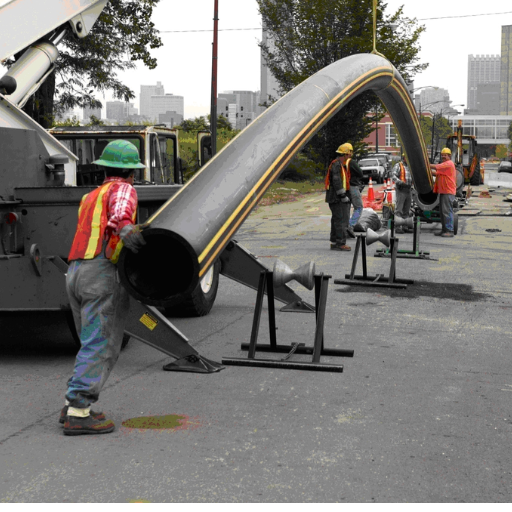
As a contributory reader of the industry, I can tell that the distribution of natural gas with a polyethylene pipe is a tribute to the wonderful properties of the material. When constructing a gas distribution system, the choice of a polyethylene pipe is due to its strength, flexibility, and resistance to corrosion. The installation process is simple; these pipes can be easily welded by heat to produce a leak-proof system that conveys a constant supply of natural gas from supply bases to the end users. Employing polyethylene, and in particular HDPE, makes for a robust system that is capable of accommodating stress arising from thermal variations or ground movements, thereby protecting the concrete pipeline. Additionally, its economy and low maintenance as well favor its wide use in contemporary gas distribution systems.
The Role of HDPE Pipe in Natural Gas Distribution
I would say that it is imperative for all practitioners in this area to learn about the importance of HDPE (High-Density Polyethylene) pipes in natural gas distribution. Firstly, one key issue is the service life of the pipe. Because of their physical structure, HDPE pipes are characterized by a high-reliability rate, with an operational lifetime that is usually more than 50 years, meaning they are very robust against external pressure and biological factors.
The other important characteristic of these pipes is their flexibility. Weather conditions and earthquakes may lead to wide temperature variability, and without compromising material integrity, the properties of the material can change since HDPE is so flexible.
Furthermore, there is the issue of the corrosion resistance of polyethylene pipes. If the soil of a variety of kinds or water is present, these will not corrode or degrade, thus cutting down on maintenance and suspension of services.
Also, heat fusion welding should be emphasized as a key element of HDPE pipes. The heat fusion welding process creates bonds that are either equal to or even stronger than the pipe itself, forming a continuous pipe with less possibility of leakage.
Lastly, the cost is arguably the greatest advantage of HDPE pipes. This is because they are usually cheaper and easier to move around, hence lessening transport and installation expenses. Their low maintenance demands mean that they are also relatively cheaper in the long term compared to some other options. Overall, these parameters together allow one to state that HDPE is an essential material in natural gas distribution.
Key Benefits of Using HDPE for Gas Applications
The main advantages of using HDPE for gas applications are associated with its strength, ductility, resistance to corrosion and ease of installation. Long service life and resistance to external factors make the use of HDPE pipes cost-effective in the long run. Their flexibility is also a major concern in some areas that experience earthquakes, while their corrosion resistance minimizes the need for maintenance. One of these advantages is the use of heat fusion welding, which makes the joints solid and leak-free, thus enhancing the efficiency of gas supply networks.
Safety Features of Polyethylene Gas Pipes
The measures that polyethylene gas pipes take to safeguard their operations are, in my view as an industry practitioner, outstanding and dependable. The structural and bodily tensility, coupled with its flexibility, means that I have witnessed a minimal incidence of pipe fra censure, ground movements, or external pressure as the factors responsible. Due to the absence of corrosion and chemicals that destroy polyethylene, it is protective against gas distribution network deterioration, ensuring its long-term existence, which is critical for effective gas distribution networks. Similarly, an aspect I consider to be a safety feature is the fact that the risk of leaks is eradicated by the use of heat fusion in joining these pipes. Rising above these features, the light weight of these pipes enables safe manipulation during the processes of installation, which facilitates the achievement of the objective, which is smooth and stable gas delivery systems.
What Are the Specifications of Pipe for Natural Gas Distribution?
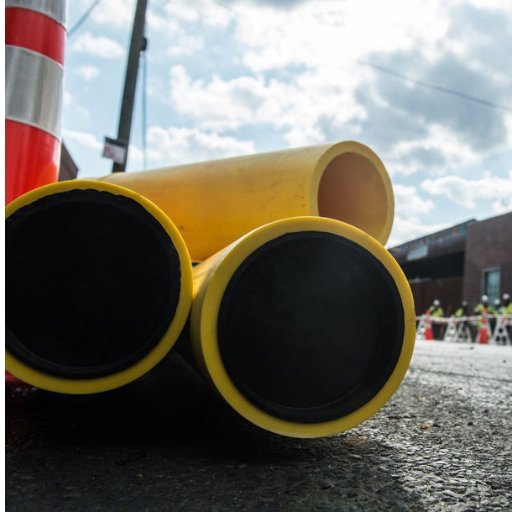
First, pipes are required to be of fixed nominal diameters, which are in the range of ½ inches to 48 inches, in order to suit different distribution purposes. Second, the pressure rating is important – usually, the pipes are rated between 4 and 100 psi depending on the length and amount of gas to be moved. Thirdly, the grade of the material is important, as most PE4710 grades are used because of their higher strength and resistance. Last but not the least, wall thickness is taken in terms of the Diameter-Pipe Ratio (DR) whereby strength of the wall is achieved together with flexibility. These set of parameters guarantee that the pipes will be able to function reliably and safely in the pipeline as parts of the natural gas distribution system.
Understanding Pipe Specification and Standards
Key Specifications and Standards
A list of Pipe Specification and Standards for Natural Gas Distribution ppeclaryrelstandards is presented below:
- Standard Diameter Sizes:
- Most frequently spanning ½ inch up to 48 inches
- Such sizes satisfy a range of distribution needs, both in residential and industrial applications.
- Pressure Ratings:
- Generally rated from 4 to 100 psi.
- The pressure rating is vital to accommodate varying distances and volumes of gas flow, ensuring safe and efficient transport.
- Material Grade:
- PE4710 is commonly used.
- Known for its enhanced strength and durability, PE4710 ensures long-term reliability and resistance to environmental stressors.
- Wall Thickness:
- Adjusted according to the Diameter-Pipe Ratio (DR).
- A balance between structural integrity and flexibility ensures the pipes can handle external pressures while providing consistent gas flow.
Following these specifications and standards contributes to the improvement of the dependability and security aspects of the natural gas distribution system, ensuring a safe energy supply.
Importance of ASTM D2513 in Pipe Manufacturing
I am frequently asked about the function of ASTM D2513 in the scope of Pipe manufacturing for Natural Gas distribution. In my views, compliance to this standard is of great significance for several reasons, which I will explain below:
- Material Specifications: Section 5 and Appendix D, which form part of ASTM D2513, elaborate the material characteristics that polyethylene pipes must possess so as to be considered appropriate. It is to be noted that these pipes would be of great quality in terms of durability and resistance to environmental strains.
- Safety Standards: The standard outlines detailed safety rules for the manufacturing and testing of pipes. This goes a long way in guarding against leaks and the resultant dangers of moving natural gas.
- Performance Requirements:This includes the metrics of performance such as the pressures that withstands as well as the degree of flexibility of the pipes, which are to be achieved. By following these conditions, the manufacturers ensure that the tested or quality pipes would be able to stand the test of time and perform under different conditions.
- Testing Procedures: In the event that the contractors have breached the contract, And such additional conditions have not been included in ASTM D2513, such conditions shall be replaced by the statutory texts and regulations specified for thermal procedures. And such additional conditions have not been included in ASTM D2513, such conditions shall be replaced by the statutory texts and regulations specified for thermal procedures.
- Regulatory Compliance: Where such conditions have not been included in ASTM D2513, such conditions shall be replaced by the statutory texts and regulations specified for thermal procedures, To put it another way, following the guidelines outlined in this international standard helps to ensure that the structures fit into an intricate political, legal, regulatory, and operational system.
From a wider point of view, observing the requirements of ASTM D2513 quite strictly is necessary for the high level of quality control over the manufacturing of pipes and the safety and reliability of natural gas systems.
The Differences Between MDPE and HDPE
In contrast to MDPE, HDPE possesses greater strength and rigidity. However, MDPE has advantages like improved ductility and better impact resistance over HDPE. While both types of polyethylene are flexible, their temperature and density differentiation affect their performance. Strength, ductility, and flexibility are the main differences that come into play in the duel between MDPE and HDPE. To round up, MDPE and HDPE, differentiated by tensile strength, ductility, melt flow rate, and flexural yield strain, are elastomers, but MDPE is said to be softer than HDPE.
- Density: MDPE is differentiated from HDPE primarily by the density range which is evident in their respective names with the former having a range between 0.926 to 0.940 g/cm³ and the latter a range of 0.941 to 0.965 g/cm³. This difference in density impacts the physical properties and applications of these two materials, which explains why they are used in specific applications alone.
- Flexibility and Toughness: However, it is MDPE that is readily used due to its relatively more tensile strength and the amazing toughness which allows the resin to stand up to huge physical impact while remaining flexible enough to be used in gas pipes enabling it to absorb shocks due to changes in earth pressure or stress on the pipes.
- Strength and Stiffness: In contrast to both of the mechanical properties mentioned above, HDPE exhibits high strength and comparatively increased stiffness which makes it ideal for use in pressure piping systems since the material has high density and enhanced tensile strength making it optimal for pressure bearing systems.
- Chemical Resistance: Both MDPE and HDPE offer excellent chemical resistance, but HDPE typically provides greater resistance to a wider range of chemicals, making it preferable for applications involving harsh or corrosive environments.
- Temperature Range: The number of applications in which HDPE can be used is larger than that of MDPE, this is mainly because it is known to withstand extreme heat levels and is better suited to withstand harsh temperatures than MDPE.
- Cost:Generally, the cost can also vary, with MDPE often being less expensive than HDPE. This factor alone can influence the decision-making process when selecting materials for specific projects.
Knowing these parameters allows us to determine when MDPE or HDPE should be adopted in view of the specific requirements and limitations of a given application. Such differentiation also aids the selection of the appropriate material considering the performance and the objective of the project.
How to Ensure Leak-Free Gas Pipe Installations?
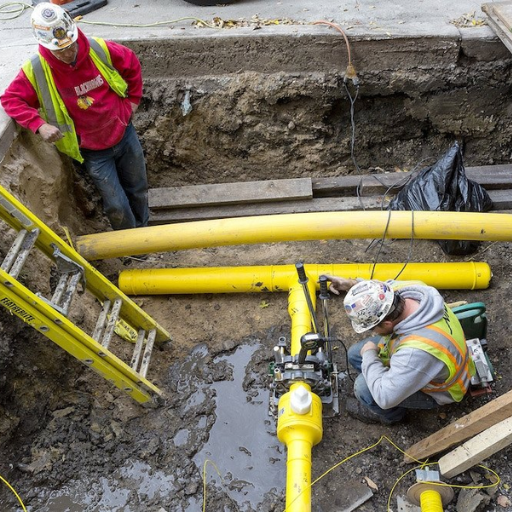
Knowing these parameters allows us to determine when MDPE or HDPE should be adopted in view of the specific requirements and limitations of a given application. Such differentiation also aids the selection of the appropriate material considering the performance and the objective of the project.
- Material Selection: Minimising leakage risks can be achieved by selecting an appropriate new material like MDPE for flexibility or HDPE for strength depending on specific application requirements.
- Proper Design: Careful design calculations should be done taking into account pressure ratings, thermal expansions and influences of environment. For example, in places with ground movement, MDPE pipes are selected as they are flexible enough to take the ground shift without cracking.
- Quality Control and Inspection: Quality control and checks during production and agenda puts the manufacturer in a better place. Ultrasonic inspection, x-ray inspection and other advanced NDT methods can help detect potential defects.
- Skilled Installation: Installation should be done by qualified and competent people. Qualification and certification for training tend to improve the state of the art of the industry and restrict possible ways of making blunders during installation.
- Jointing Techniques: Use appropriate electrofusion or butt fusion welding for joining the pipes. Studies show that the use of fusion joints is more reliable/workable than mechanical fittings.
- Pressure Testing: Leaks may be detected by performing a pressure Hydrostatic test of 1.5 operational pressure at a specified time range before commencing system operation, making a necessary measurement that all joints are in good condition after installation
- Regular Maintenance and Monitoring: Define routine maintenance measures and control mechanisms like detection of pressure drops or abnormal flow changes utilizing smart sensors which may point towards possible leaks.
Such detailed procedures executed with computerization as well as skilled hands would highly reduce the chances of gas leaks thereby making sure that the installation works safely and effectively.
Effective Fusion Techniques for HDPE Pipes
joining HDPE pipes effectively using fusion techniques is of great importance in order to obtain strong and leakage-free joints. Permit me to clarify this for you in an easier form:
- Surface Preparation: The first step in this process would be to wipe out the pipe surface such that there are no traces of dust, grease or any other contaminant and ensuring there will be a strong bond. A set of standards relevant to the particular application are established.
- Proper Alignment: Check the alignment before proceeding with the fusion. Otherwise there is much likelihood of the possibility of weak joints and leaks. Use aligning tools to maintain the ample gap between the pipes.
- Pressure Parameters: To fuse the components together, a certain degree of force has to be applied pressure, too little or too much can result in a weak bond or deformation. Pressure settings are often specified by equipment manufacturers to ensure their products will work effectively with their guides.
- Temperature Control: Several types of materials for pipes can be joined together using the fusion process in which the ends of the pipes are heated to the proper temperature. Different fusion heaters are found which are set at a standard temperature for the surface area of rods to be around 450 degrees Fahrenheit (232 degrees Celsius).
- Fusion Time: There are certain times allowed for heating and cooling of the fusion pipes that ought to be strictly adhered to. Ignoring such instructions could lead to a significant loss of performance in the joints. Time parameters depend on the dimensions of the pipes and their composition and any recommended guidelines provided by the manufacturer should be observed.
- Visual Inspection: After the fusion process, conduct a thorough visual inspection. Look for uniform bead formation along the joint’s edges, as this indicates a successful fusion.
Adhering to these specific parameters ensures that a satisfactory fusion joint is obtained in HDPE pipes. Such a procedure lowers the chances of leaks and adds to the dependability of the entire system.
Choosing the Right Pipes and Fittings for Your Needs
Whenever choosing pipes and fittings for your project, do not forget to pay attention to the following facts in order to make the appropriate choice:
- Material Type:: It would be helpful to determine which of the following materials will be suitable for your particular use case. The following are a few common ones:
- PVC (Polyvinyl Chloride): Being lightweight as well as non-corrosive, it has proven to be an ideal solution for cold water systems and for drainage as well.
- CPVC (Chlorinated Polyvinyl Chloride): It is a thermoplastic polymer with better heat retention capabilities which means CPVC can cater hot and cold water solutions.
- Copper: While it is comparatively more expensive, it certainly is durable and provides for long service life; hence, it is often used in water supply pipelines.
- PEX (Cross-linked Polyethylene): Very easy to fit and flexible PEX is found in plumbing systems and even in the radiant heating systems as well.
- Pipe Size: The diameter needs to be chosen very carefully because it affects the efficiency of the system. Pipe size is set according to the flow rate that the application requires and based on the rating of the pressure of the system. Make detailed calculations or ask a plumber for assistance in order to obtain the best size.
- Pressure Rating: Each pipe and fitting has a pressure rating that has been set, and this is noted in PSI (pounds per square inch). Ensure that the materials selected are capable of sustaining the working pressure of the system in order to mitigate eventual failures.
- Environmental Conditions: Take into consideration the environmental conditions to which the pipes are going to be exposed:
- Exposure to Sunlight: Several materials, like PVC, are easily affected by UV light unless stabilizers are given or covered.
- Temperature Extremes: Opt for materials that will withstand the temperature condition that is likely to be envisaged, with no performance lose.
- Compatibility: When you choose pipes and fittings, make sure they fit together in thickness, bulk, and fittings, since the use of a material that is incompatible with others can cause interference at a chemical level or dimensional level.
Taking these factors into account will assist you in selecting the appropriate pipes and fittings, thus guaranteeing a safe and efficient plumbing or piping system that meets your requirements.
What are the cost considerations for HDPE pipe installations?
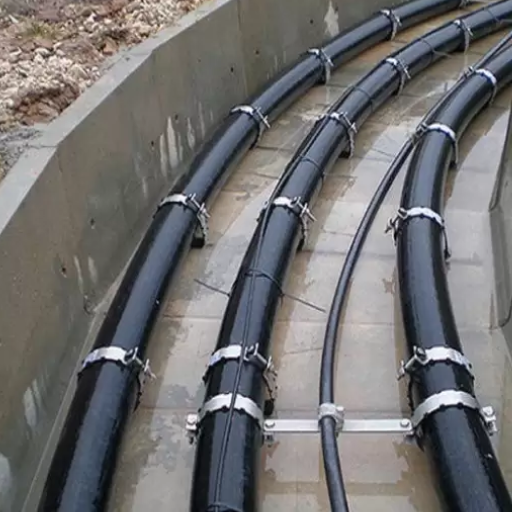
The first thing to consider while assessing the cost factors pertaining to the installation of HDPE pipes is the cost. HDPE is more expensive in terms of material than the usual fittings such as PVC and PEX. Although to some extent above average, the material costs are justified due to the fact that HDPE is a robust product that is built to last and, therefore, brings down costs across the life cycle. Considering the factors related to construction, installation costs might be high, however, the pipes are light-weight and flexible which makes their handling easier and subsequently minimizes the labor time required. This might also mean that the installation, due to the pipes’ characteristics, is done at less cost. Furthermore, HDPE pipes are often installed using trenchless methods, and again, these types of methods are also less costly as they are less demanding in terms of excavation. Lastly, there are possible savings on account of lack of corrosion, lower maintenance and better energy economy due to a smoother inner surface that minimizes friction loss when fluids are transferred.
Understanding Installation Costs of HDPE
Answering Cost Considerations of HDPE Pipe Installations
A trained head should change the rhetoric to break down the installation costs of HDPE pipes to a more understandable level. First, note the following:
- Material Cost: HDPE pipes may have a higher price in terms of the initial cost of acquisition than other means, such as PVC. Nonetheless, this should be considered with years in use because the long-term reliability of HDPEs can yield savings.
- Installation Ease: HDPE is also light and has flexibility which makes the work of installation easier which in turn can lower their cost of labor because the number of men and time required for handling and installing the system gets less.
- Trenchless Technology: One of the outstanding features of HDPE is the fact that it has almost no limitations on trenchless construction. Such methods can save money by reducing the amount of excavation work and hence the amount of restoring work needed.
- Maintenance: HDPE pipes are able to withstand corrosion and chemical build up thus requiring less maintenance thereby translating to reduced operational maintenance costs across its life span.
- Friction Loss: HDPE pipe has a smooth surface on the interior and eliminates most of the friction losses resulting in better transfer of energy during the flow of fluids through the pipes. In the future it is possible to experience lower operational costs in pumping energy demand.
Interrupting the provision of water using an HDPE pipe seems easier, as described above. Moreover, it puts more emphasis on economics in the long run.
Comparing HDPE with Other Pipe Materials
While HDPE may be beneficial when it is commercially utilized, it still fails to bestow any legislative advantages. Other pipe materials may be utilized in some additional factors influencing the selection process. This table summarizes some of the possibilities:
- PVC (Polyvinyl Chloride):
- Material Cost: Generally less expensive upfront compared to HDPE.
- Strength and Durability: PVC is rigid, which can be a disadvantage in areas prone to ground movement.
- Temperature Tolerance: Not ideal for very high or low temperatures; HDPE performs better in temperature extremes.
- Steel:
- Strength: High tensile strength, suitable for high-pressure applications.
- Corrosion: Susceptible to rust and corrosion unless treated; HDPE naturally resists corrosion.
- Installation: Heavier and may require more effort and costs for installation.
- Copper:
- Durability: Resistant to corrosion and offers good longevity.
- Cost: More expensive than HDPE both in terms of material and installation.
- Applications: Typically used for plumbing in buildings due to its antimicrobial properties.
- Concrete:
- Longevity: Offers excellent durability and lifespan.
- Environmental Impact: High carbon footprint compared to HDPE.
- Maintenance: Requires regular inspections to prevent cracking or leaking.
Different materials used in pipes have different advantages and disadvantages, and therefore, their use in piping depends on the project requirements, site conditions, cost, and future performance needs.’
Reference
- How Long Does HDPE Pipe Last? And Other FAQs – This source discusses the life expectancy of HDPE pipes, which is typically benchmarked at 50 years.
- Design life of HDPE & PE pipe (polyethylene pipe) – Provides technical guidance on the design life of HDPE pipes, often based on empirical data.
- How HDPE Gas Pipes Withstand The Elements? – Explains the resistance of HDPE gas pipes to corrosion, making them suitable for underground gas distribution.
Frequently Asked Questions (FAQs)
Q: What is HDPE, and why is it the material of choice for gas pipes?
A: HDPE stands for high density polyethylene, a durable and flexible plastic that is the material of choice for gas pipes due to its high resistance to corrosion, degradation, and its ability to form leak-free joints. It offers a longer design life than other piping materials, making it ideal for gas distribution and gas-gathering applications.
Q: How does HDPE gas pipe reduce installation costs?
A: HDPE gas pipe reduces installation costs because it is lightweight and flexible, allowing for long laying without the need for numerous joints. This flexibility also means that fewer fittings are required, leading to quicker and more efficient installations.
Q: What are the popular brands of HDPE gas pipes?
A: Popular brands of HDPE gas pipes include those that manufacture high-density polyethylene pipe, pe2708, and pe4710 pipe, all of which are known for their reliability and durability in gas distribution applications.
Q: Can HDPE gas pipes be used for propane distribution?
A: Yes, HDPE gas pipes, particularly the yellow mdpe and yellow stripe varieties, are suitable for propane and other petroleum gas distribution, as they are designed to resist damage and degradation even in rigorous conditions.
Q: What is the significance of SDR11 in HDPE gas pipes?
A: SDR11 refers to the Standard Dimension Ratio, which indicates the pipe’s thickness in relation to its diameter. An SDR11 HDPE gas pipe offers a balance between flexibility and pressure capacity, making it suitable for various gas applications.
Q: How are HDPE gas pipes installed, and are there specific techniques used?
A: HDPE gas pipes are installed using fusion techniques such as butt fusion and electrofusion, which create strong, leak-free joints. These methods ensure the integrity of the gas distribution system and contribute to the pipe’s long design life.
Q: What role does HDPE play in oil and gas industries?
A: In the oil and gas industries, HDPE is used in the production of pipes for gas distribution and gas gathering applications due to its higher tensile strength and resistance to harsh environmental conditions, making it a reliable choice for these demanding sectors.
Q: Are there specific standards that HDPE gas pipes must meet?
A: Yes, HDPE gas pipes must meet specific standards such as those outlined by pe100 and pe2708, ensuring they are suitable for gas distribution and provide the necessary strength and durability to resist damage and leakage.
Q: Is there a difference between MDPE and HDPE gas pipes?
A: Yes, while both are forms of polyethylene used for gas distribution, MDPE (medium density polyethylene) is typically used for lower pressure applications, whereas HDPE (high density polyethylene) has a higher tensile strength and is used for more demanding applications.



